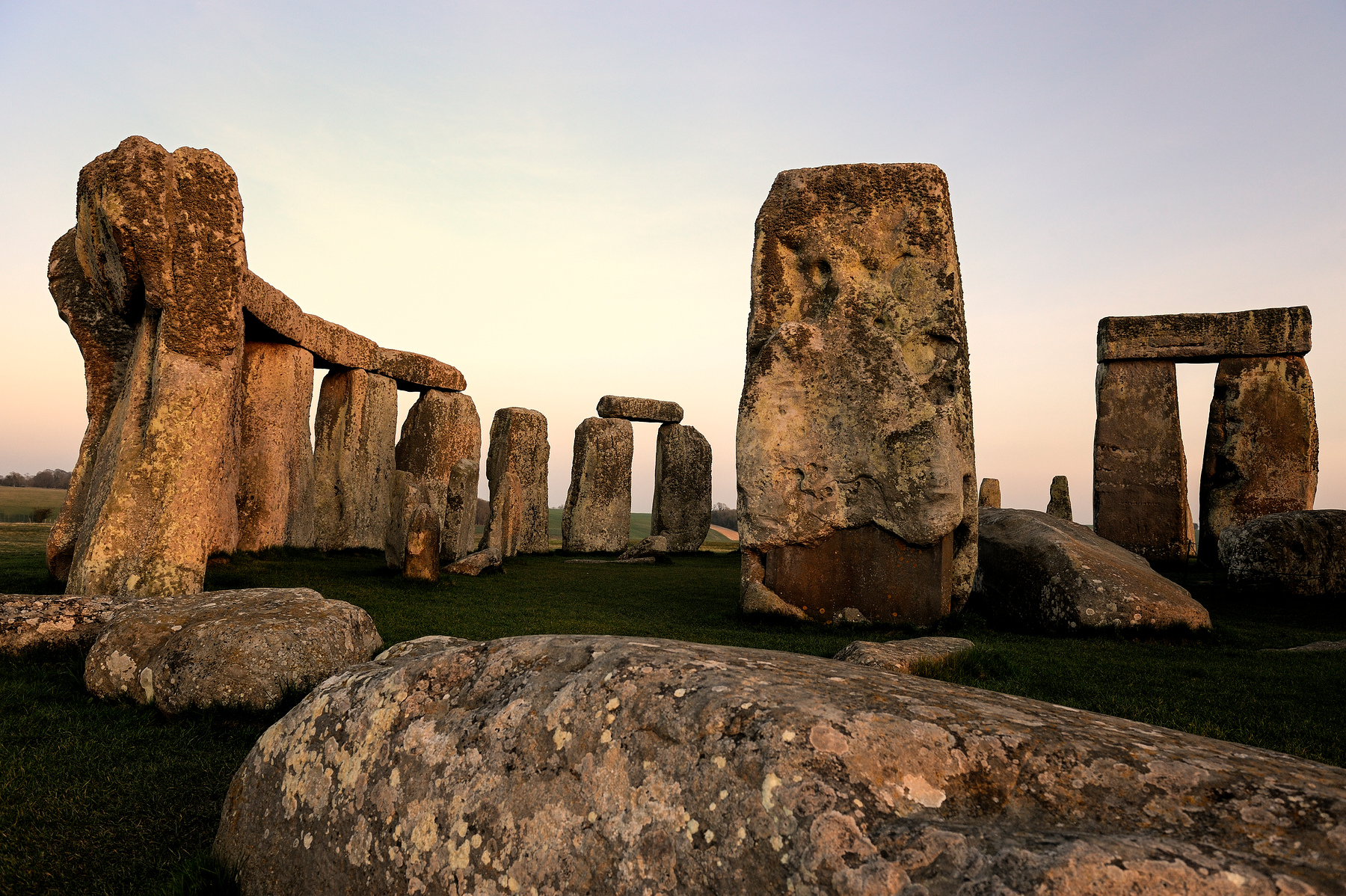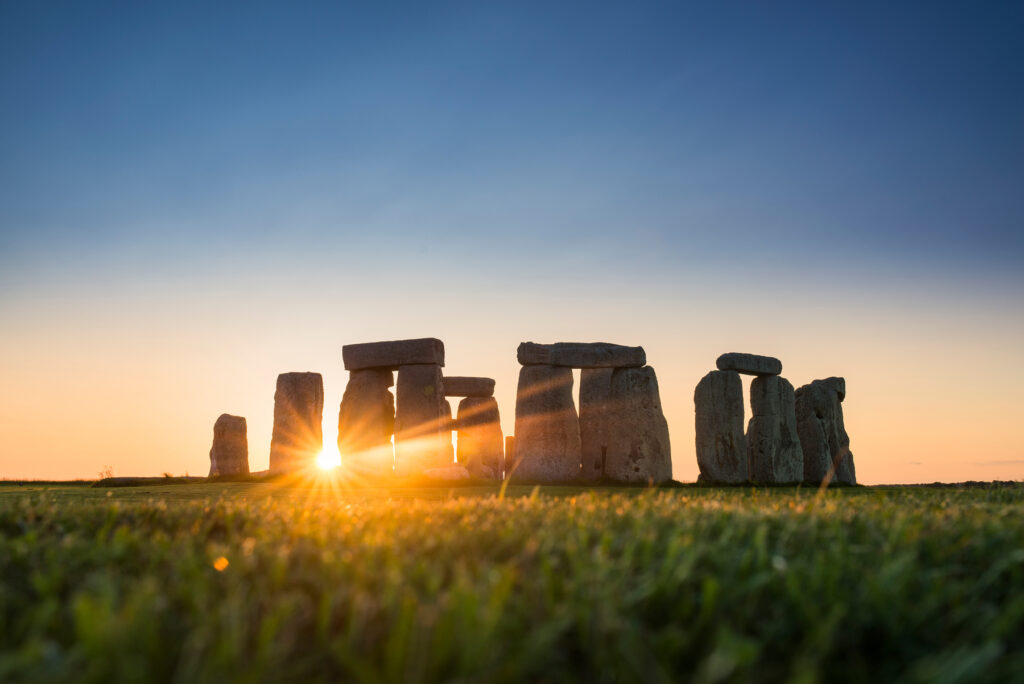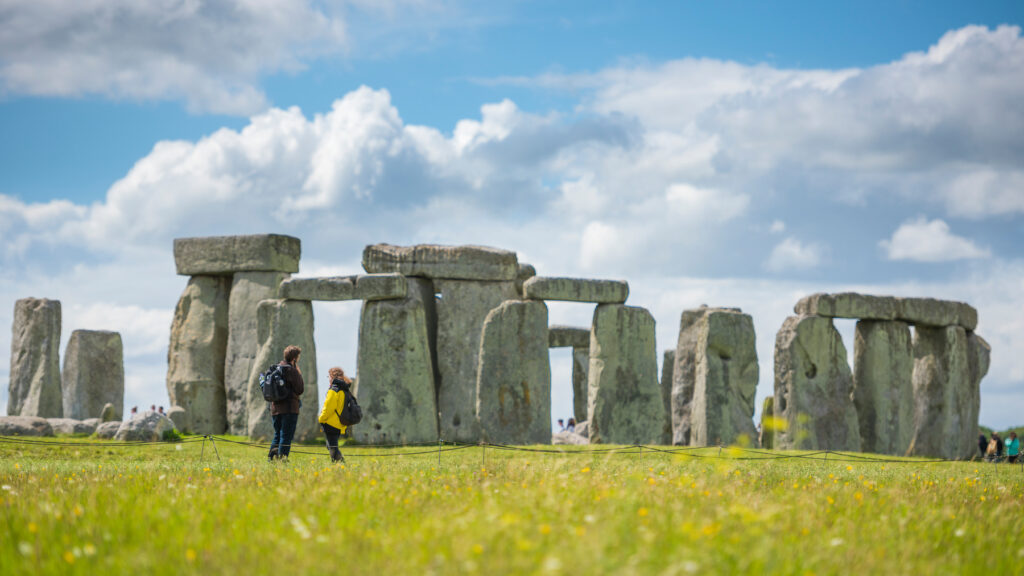
A busy English road known as the A303 takes drivers all the way from London to the southwest of England. There are many fine views of the countryside along the way, but at one point there is the most extraordinary sight you will ever see. It’s a ring of about 100 huge stones that stand up to four metres high. They are so large, they weigh 25 tons each. During the daytime, you will notice large numbers of people looking up at the stones. Some have travelled across the world to take a look at what is known as Stonehenge.
Stonehenge is the world’s most famous prehistoric landmark. It is believed that it was developed in three different stages of history. The first stones were erected in about 2,500BC, making Stonehenge older than the Egyptian pyramids. Human bones have been found beneath the site that date back in time even further. Despite it having been there for such a long period of time, no one really knows what its purpose was supposed to be, and there are no written records that can help reveal its secrets.

Most experts agree that it was intended as some kind of important burial ground. In the 1920s, nearly 60 human bodies were discovered beneath the site. There is also a general view that Stonehenge was a place where religious ceremonies were once held.
Some of the stones are in line with the sunrise on midsummer’s day and the winter solstice – the longest and shortest days of the year. Many think that Stonehenge may have been some kind of calendar, or a place where the solar system could be studied. But who knows?

There is another question that is difficult to answer. The outer ring of stones, known as Sarsens, are larger than those found within the inner ring, called Bluestones. The Sarsens were carried from a place about 32 kilometres from Stonehenge. Even today this would present transportation problems. They were actually moved before the wheel had been invented! What’s more, the Bluestones were from Wales, 225 kilometres away. Each of them weigh about four tons. How was this possible? The most logical explanation is that they were carried at least some of the way by boat.

Even though Stonehenge still holds so many mysteries, it is one of Great Britain’s most famous icons. Up to one million people come to visit every year. They gaze up at the enormous stones, perhaps wondering why they are there. Or maybe they are just thinking to themselves, “How were these stones moved so long ago? Surely, it was impossible.”

Watch an animated history of Stonehenge
VOCABULARY
